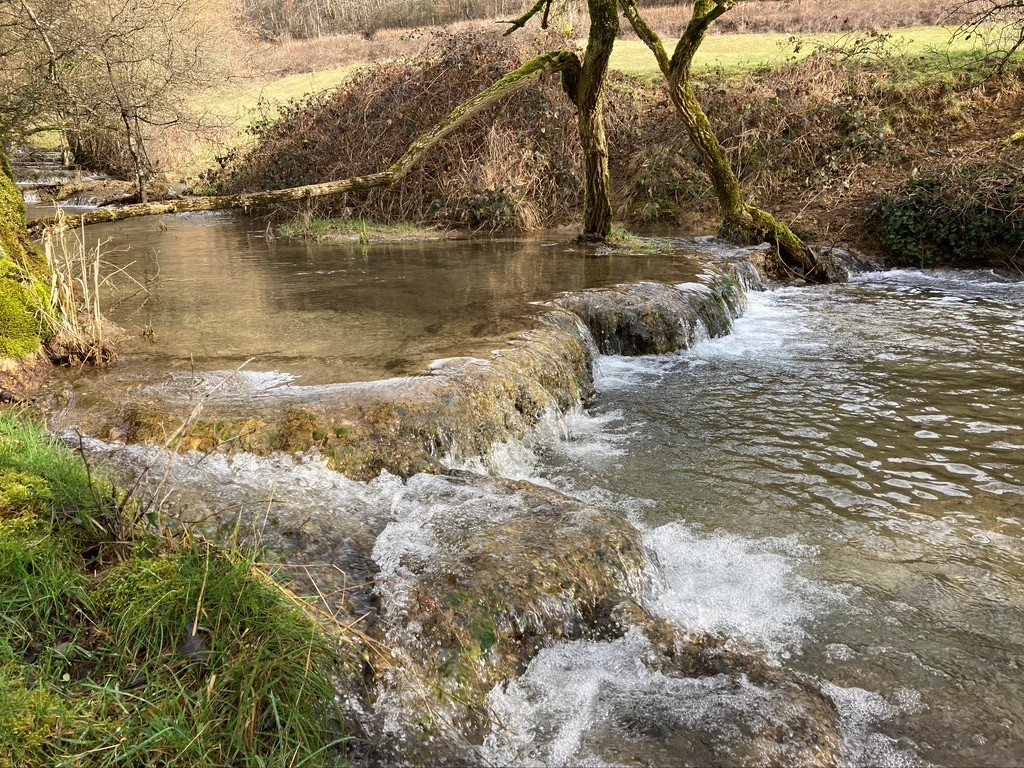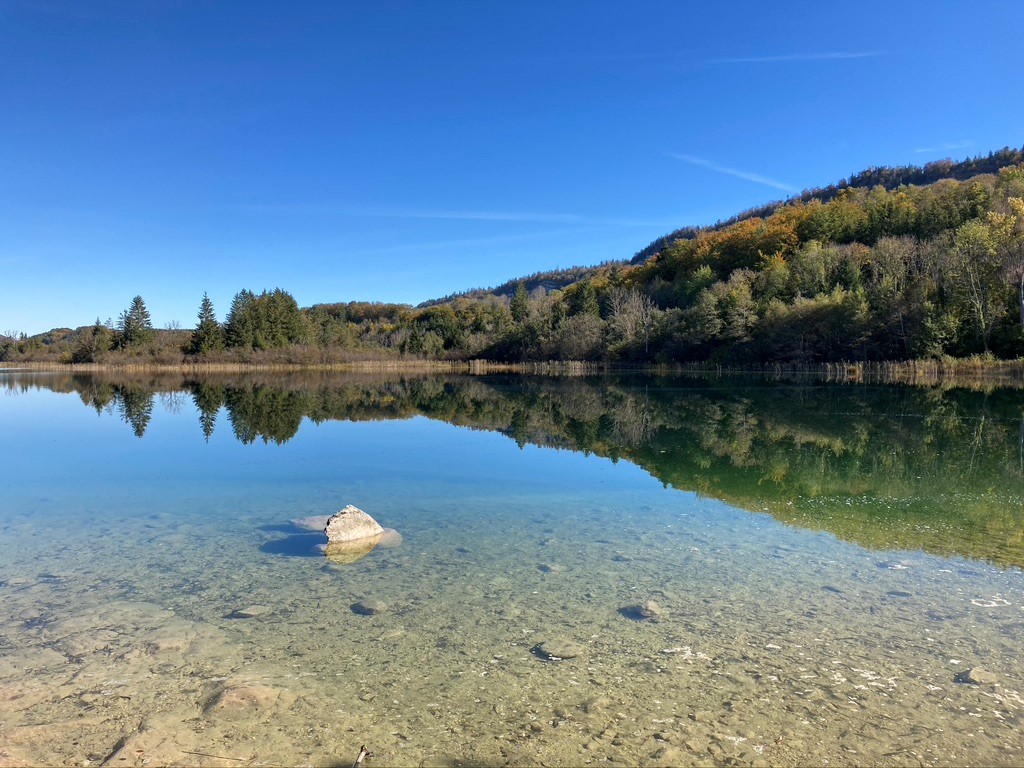Pierre Boussagol PhD thesis
 Microbial carbonates, a future for the capture and storage of CO2 and pollutants (CARBOSTOCK)
Microbial carbonates, a future for the capture and storage of CO2 and pollutants (CARBOSTOCK)
Started in october 2021
Funding: région Bourgogne Franche-Comté
Supervisor: Emmanuelle Vennin
Abstract
 The increase of atmospheric CO2 and pollutants (e.g. As, Cd, Se, Hf) in the natural environment requires the development of sequestration processes. This PhD project focuses on the capture and storage of these elements in carbonate deposits (particularly microbial carbonates), providing the advantage of permanent storage. The objective of this PhD is to provide a quantitative approach to the storage capacity of CO2 and pollutants at the surface, in the form of carbonates. The first stage of this project consists of a physical and chemical characterization of the hydro-systems (rivers, springs) coupled with a characterization of the associated carbonates on three strategic sites. A second step will be to describe the processes, kinetics, and rates of carbonate production to quantify and predict the volumes of CO2 captured and stored. Particular attention will be focused on the properties of the substrates that promote mineralization and the adsorption of pollutants. Elemental and isotopic analyses will complete the characterization of the fluids and constrain the conditions of carbonate precipitation. Following this precise characterization of carbonate precipitation conditions in a natural system, a transposition to a controlled system (laboratory, flow-cell) will be undertaken to define the optimal carbonate production conditions to optimize the capture and storage of CO2 and pollutants. Finally, a third step will be to evaluate the stability of the precipitated carbonates over time by simulating the effects of diagenesis.
The increase of atmospheric CO2 and pollutants (e.g. As, Cd, Se, Hf) in the natural environment requires the development of sequestration processes. This PhD project focuses on the capture and storage of these elements in carbonate deposits (particularly microbial carbonates), providing the advantage of permanent storage. The objective of this PhD is to provide a quantitative approach to the storage capacity of CO2 and pollutants at the surface, in the form of carbonates. The first stage of this project consists of a physical and chemical characterization of the hydro-systems (rivers, springs) coupled with a characterization of the associated carbonates on three strategic sites. A second step will be to describe the processes, kinetics, and rates of carbonate production to quantify and predict the volumes of CO2 captured and stored. Particular attention will be focused on the properties of the substrates that promote mineralization and the adsorption of pollutants. Elemental and isotopic analyses will complete the characterization of the fluids and constrain the conditions of carbonate precipitation. Following this precise characterization of carbonate precipitation conditions in a natural system, a transposition to a controlled system (laboratory, flow-cell) will be undertaken to define the optimal carbonate production conditions to optimize the capture and storage of CO2 and pollutants. Finally, a third step will be to evaluate the stability of the precipitated carbonates over time by simulating the effects of diagenesis.
 Keywords
Keywords
sedimentology, carbonates, microbialites, CO2 capture and storage, pollutants, environment
Thesis advisory panel
Jean-Francois Buoncristiani
Eric Gaucher
- extrait:
- lien_externe:
- titre:
- Les carbonates microbiens, un avenir pour la capture et le stockage du CO2 et des polluants (CARBOSTOCK)
- date_de_debut_these:
- octobre 2021
- nom:
- Boussagol
- date_de_debut_these_numerique:
- 202110
- kc_data:
- a:8:{i:0;s:0:"";s:4:"mode";s:0:"";s:3:"css";s:0:"";s:9:"max_width";s:0:"";s:7:"classes";s:0:"";s:9:"thumbnail";s:0:"";s:9:"collapsed";s:0:"";s:9:"optimized";s:0:"";}
- kc_raw_content:
 Microbial carbonates, a future for the capture and storage of CO2 and pollutants (CARBOSTOCK)
Microbial carbonates, a future for the capture and storage of CO2 and pollutants (CARBOSTOCK)Started in october 2021
Funding: région Bourgogne Franche-Comté
Supervisor: Emmanuelle Vennin
Abstract
 The increase of atmospheric CO2 and pollutants (e.g. As, Cd, Se, Hf) in the natural environment requires the development of sequestration processes. This PhD project focuses on the capture and storage of these elements in carbonate deposits (particularly microbial carbonates), providing the advantage of permanent storage. The objective of this PhD is to provide a quantitative approach to the storage capacity of CO2 and pollutants at the surface, in the form of carbonates. The first stage of this project consists of a physical and chemical characterization of the hydro-systems (rivers, springs) coupled with a characterization of the associated carbonates on three strategic sites. A second step will be to describe the processes, kinetics, and rates of carbonate production to quantify and predict the volumes of CO2 captured and stored. Particular attention will be focused on the properties of the substrates that promote mineralization and the adsorption of pollutants. Elemental and isotopic analyses will complete the characterization of the fluids and constrain the conditions of carbonate precipitation. Following this precise characterization of carbonate precipitation conditions in a natural system, a transposition to a controlled system (laboratory, flow-cell) will be undertaken to define the optimal carbonate production conditions to optimize the capture and storage of CO2 and pollutants. Finally, a third step will be to evaluate the stability of the precipitated carbonates over time by simulating the effects of diagenesis.
The increase of atmospheric CO2 and pollutants (e.g. As, Cd, Se, Hf) in the natural environment requires the development of sequestration processes. This PhD project focuses on the capture and storage of these elements in carbonate deposits (particularly microbial carbonates), providing the advantage of permanent storage. The objective of this PhD is to provide a quantitative approach to the storage capacity of CO2 and pollutants at the surface, in the form of carbonates. The first stage of this project consists of a physical and chemical characterization of the hydro-systems (rivers, springs) coupled with a characterization of the associated carbonates on three strategic sites. A second step will be to describe the processes, kinetics, and rates of carbonate production to quantify and predict the volumes of CO2 captured and stored. Particular attention will be focused on the properties of the substrates that promote mineralization and the adsorption of pollutants. Elemental and isotopic analyses will complete the characterization of the fluids and constrain the conditions of carbonate precipitation. Following this precise characterization of carbonate precipitation conditions in a natural system, a transposition to a controlled system (laboratory, flow-cell) will be undertaken to define the optimal carbonate production conditions to optimize the capture and storage of CO2 and pollutants. Finally, a third step will be to evaluate the stability of the precipitated carbonates over time by simulating the effects of diagenesis. Keywords
Keywordssedimentology, carbonates, microbialites, CO2 capture and storage, pollutants, environment
Thesis advisory panel
Jean-Francois Buoncristiani
Eric Gaucher
